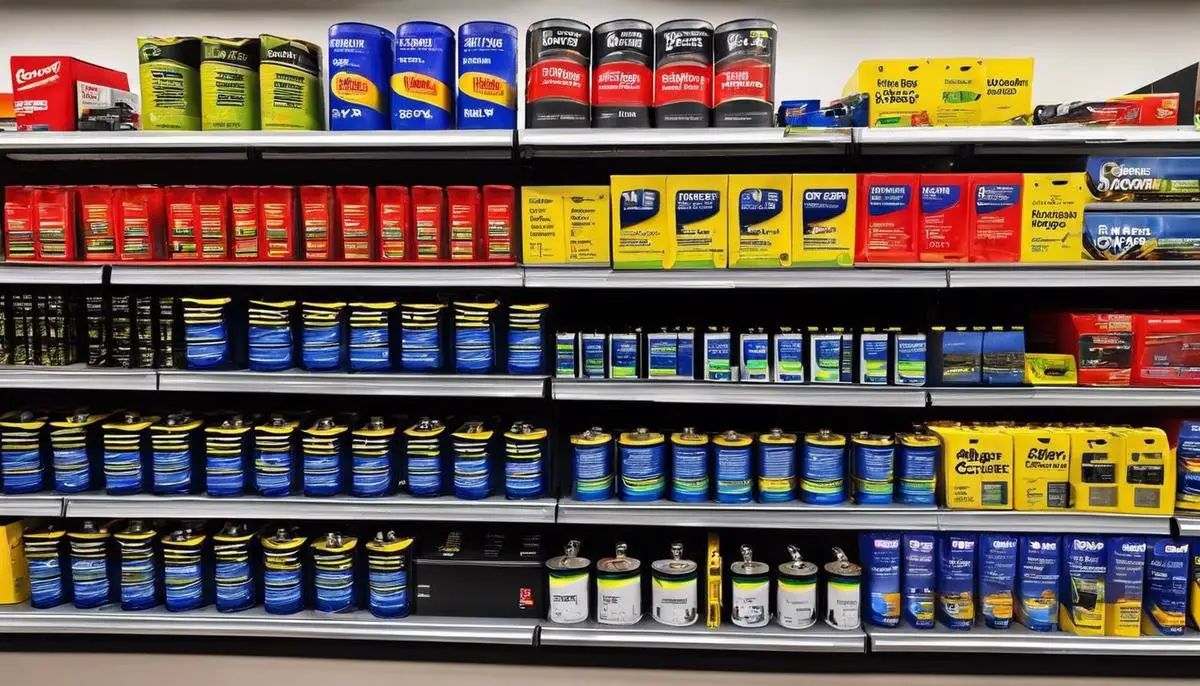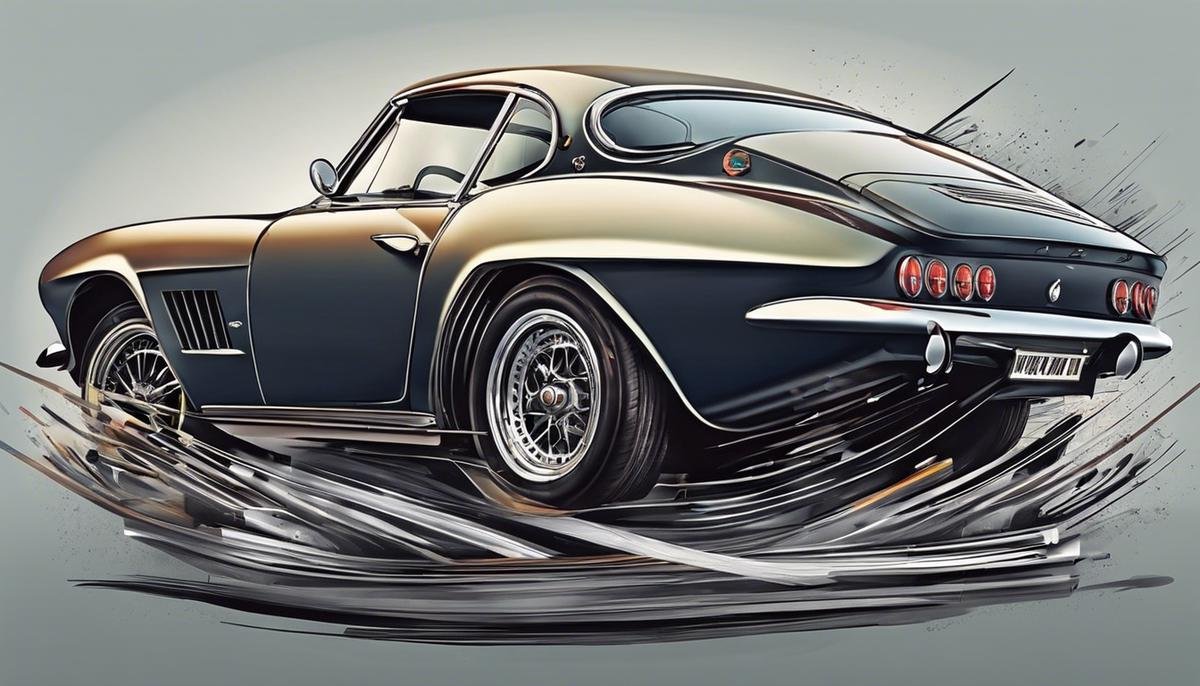
Have you ever been behind the wheel, taking a sharp turn, and suddenly there's a clicking noise emanating from your car that wasn't there before? This unwanted symphony can be jarring, turning a peaceful drive into a quest to uncover what's amiss. But fear not, as this essay is crafted to guide you through the maze of possible mechanical maladies. From understanding the common culprits like worn CV joints to the nuances of a loose wheel bearing, we are on a journey to pinpoint the origin of that persistent clicking sound. Whether you're a seasoned DIYer or a newcomer to the world of automotive troubleshooting, the insights presented here aim to provide a clear roadmap for anyone yearning to restore the harmony of a quiet ride.
Common Causes of Clicking Noises
Deciphering the Mystery Behind Your Car's Clicking Noises When Turning
You've probably experienced it: a peaceful drive suddenly accompanied by a clicking noise every time you take a turn. It’s like your car is trying to communicate using Morse code! This isn't just your vehicle getting chatty; these sounds can be crucial hints that something's amiss. For enthusiasts dedicated to understanding and maintaining their rides, let’s gear up and delve into the common triggers of these mysterious clicking sounds during turns.
Front-Wheel Drive and CV Joints: The Usual Suspects
In front-wheel-drive cars, clicking noises during turns are often linked to worn or damaged CV (constant velocity) joints. These crucial components are part of the front axle assembly and facilitate smooth power delivery while allowing the wheels to turn and the suspension to move. Here's a key point: CV joints are encased in a protective rubber boot filled with grease to stay lubricated. Over time, if that boot cracks or gets damaged, grease can leak out, and dirt can get in, leading to wear and an inevitable clicking concert on each turn.
Loose Wheel Bearings: A Wobbly Culprit
Wheel bearings let your car’s wheels spin freely with minimal friction, but when they become loose, they'll often protest with a clicking sound, particularly when you're carving those corners. It's like they’re tapping out a rhythmic warning that they're not snug in their housing, and it's time for a check-up. Although less frequent than CV joint issues, it’s a possibility that shouldn’t be ignored when troubleshooting those pesky click-clacks.
Brake System Intruders: Small Parts, Big Noises
For the DIY sleuths, take note: sometimes the little things cause the biggest ruckus. If a small object, such as a rock or debris, gets lodged in the caliper or between the rotor and the pads, it can produce a sharp clicking noise akin to an impatient typewriter, especially noticeable when taking turns. It’s a sign to inspect your brake system because what's small today could lead to bigger problems tomorrow.
Suspension and Steering Components: The Underlying Connection
A healthy suspension and steering system are key to a smooth ride. However, when parts like tie rods, ball joints, or control arms are on the brink of failure, they often cry out for attention through clicking sounds during turns. These components connect the wheels to the car's frame and let you control where you're going. Any loose or worn part in this network can start clicking, especially when the car’s weight shifts while turning.
In summary, the clicks you hear are more than just background noise; they’re a call to action to prevent further damage and ensure a safe drive. Whether it’s the CV joints, wheel bearings, brake systems, or suspension and steering elements, each click could be a clue leading to a necessary fix. So next time your car starts tap-dancing around corners, remember: it's better to investigate sooner rather than later. No wrap-up needed—your car’s smooth, silent performance will be thanks enough.
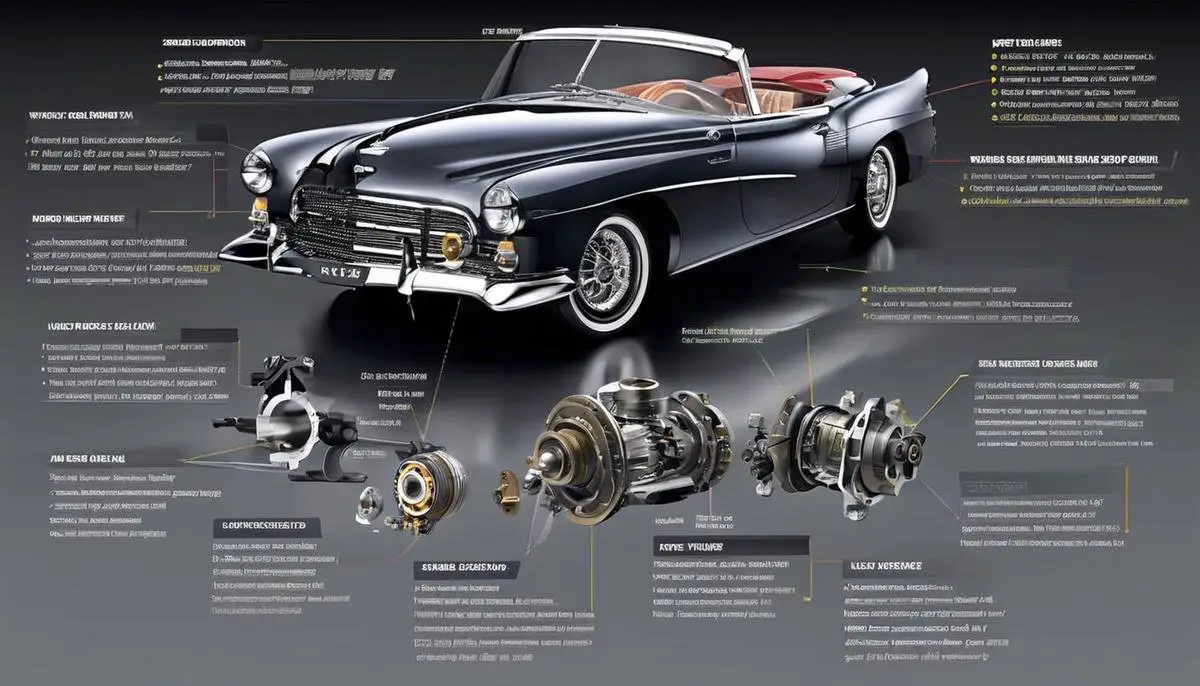
Diagnosing the Source of the Click
Detecting the Source of Your Car's Clicking Symphony
When it comes to playing detective with your car's unexplained clicking noise during turns, we've already explored the usual suspects of CV joints in front-wheel-drive vehicles, the wiles of loose wheel bearings, the small but mighty contributions of brake system components, and the crucial role of suspension and steering. But the quest for that elusive clicking culprit doesn't end there. Fear not, fellow automotive enthusiasts, the mystery can indeed be solved!
Power Steering: A Forceful Scenario
When your car begins clicking as it turns, consider looking into the power steering system. Power steering fluid that's low because of a leak or clogged line can cause the pump to groan or click, protesting its arduous efforts. Also, a worn power steering pump itself might be the arsonist starting the clicking fire in your engine bay. Check for leaks, address the fluid level, and listen to the pump while the car is stationary to see if it's singing a similar tune.
Tire Treads Talking
It might sound far-fetched, but sometimes the answer is staring (or rolling) right at us. Unevenly worn or damaged tire treads can create odd noises that resonate during turns. What one might mistake for an internal mechanical symphony could simply be the rubber's rhythmic beating against the road. A comprehensive tire inspection might just be the low-hanging fruit you've overlooked.
Drivetrain Dynamics
For rear-wheel or all-wheel-drive vehicles, don't forget to give some love to the drive shaft, universal joints (U-joints), or differential. Any play or wear in these components can lead to a cascade of clicks when you take the corner. The U-joints in particular are notorious for complaining via clicks when they're feeling under the weather. Grab them with a firm hand during your inspection and feel for freedom of movement or any irregularity; if they're begging for retirement, you've likely cracked the code.
Swivel Joints and Bearings: Turning the Tables
Your car's wheels are turned by a series of joints and bearings that can also be sources of clicking when they become worn. Swivel joints, which allow the wheels to pivot, and wheel bearings that let them spin smoothly, can click, click, click their way to your awareness if they're not in top form. Don't overlook these potentially stealthy adversaries when hunting down the click.
Exhaust System Echoes
Lastly, consider the possibility of an exhaust system hang-up. An exhaust component that's become loose or is touching something it shouldn't be can resonate a click, especially as the engine shifts slightly during a turn. This can be both a noise and a safety issue, so checking for secure mounts and clearances around the exhaust system is definitely on the checklist.
Rounding the Bend
Clicking noises can feel like a car's cry for attention, speaking in riddles. Solving those riddles involves a mixture of know-how, keen observation, and sometimes a bit of luck. Trust the senses to lead down the right path—seeing, touching, and listening carefully are the hallmarks of a well-executed automotive investigation. By systematically eliminating each possibility, the root cause of that vexing clicking will reveal itself, restoring the serenity of silent turns. It's not just about solving a minor annoyance; it's about ensuring that every component is in harmony for the safety and longevity of the vehicle.
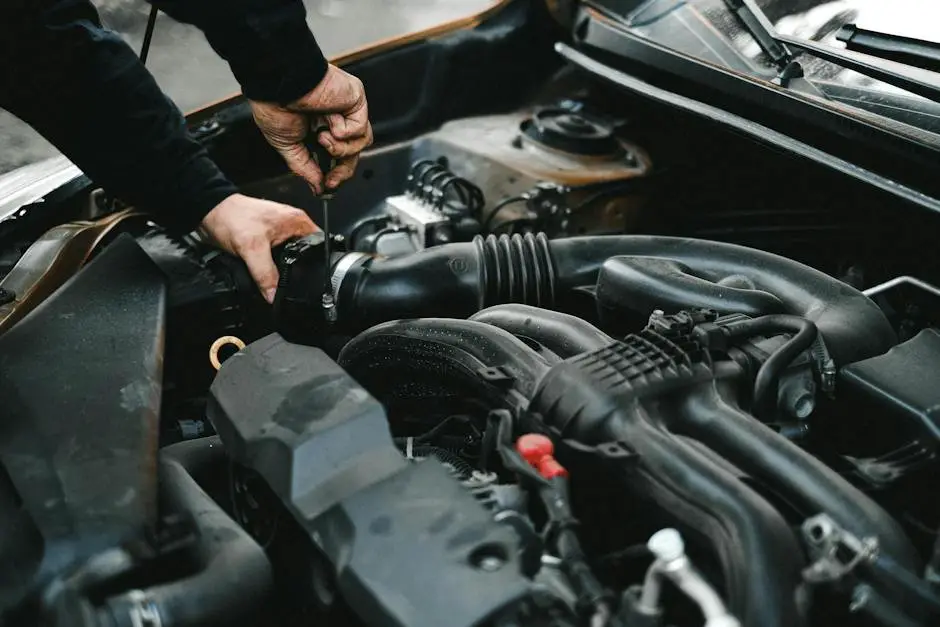
DIY Fixes for Common Issues
When diagnosing that pesky clicking noise, it’s crucial to consider the heat shields and brackets of the exhaust system. Sometimes, the expansion and contraction due to temperature changes can cause these parts to loosen. Rust or broken fasteners could lead to parts rubbing against each other, resulting in a clicking sound especially noticeable during acceleration or while the engine is under load.
When it comes to heat shields, a simple check can save a lot of headaches. If there's play, or if they seem to be rattling against other components, tightening or replacing fasteners can often resolve the problem. However, care should be taken to avoid burns or injuries, as working with the exhaust system can be dangerous when hot.
In some cases, clicking could be caused by something as simple as debris trapped in or around the brakes or caliper. Small stones or road detritus can get lodged in these areas and as wheels turn or brakes are applied, these innocuous items can create alarming sounds. A thorough cleaning of the brakes and caliper may therefore be a cost-effective DIY fix.
Let's not forget the hubcaps or wheel covers, which can generate a symphony of noises if they're loose or damaged. Secure hubcaps might seem like a small detail, but they can be the difference between a quiet ride and a noisy one. Inspecting and snapping them firmly into place, or using zip ties for a more secure fit, can mitigate unwanted sounds.
Lastly, paying attention to the vehicle's overall acoustics can provide clues. Sound deadening wheel wells and other car body parts can themselves degrade over time, sometimes resulting in increased transmission of noise from the car’s mechanical parts to the driver’s ear. Upgrading or replacing worn sound-deadening materials can not only improve ride quality but might also dampen that irritating clicking noise.
Remember, diligence is key when tackling clicking noises, and while some solutions can be simple, safety comes first. Always ensure a vehicle is properly supported when working underneath it, and seek professional assistance for complex or dangerous tasks. Happy troubleshooting!

When to Seek Professional Help
Hearing the Click: When to Call in the Pros
In the world of auto repair and maintenance, a car's clicking sounds can be as mystifying as they are frustrating. They could be harbingers of a minor issue, like debris in the brakes, or indicators of something far more serious. When the source isn't immediately clear, even after you've gone over the usual suspects—everything from power steering woes to the intricate dance of drivetrain components—it's time to delve deeper.
Now, consider the role of heat shields and brackets in your exhaust system. Temperature fluctuations are more than just a matter for your car's comfort: they can cause parts to expand and contract, sometimes enough to loosen them. A meticulous inspection can reveal if this is the cause of your problems, and often, the fix is as simple as tightening a few bolts. However, don't let the simplicity fool you—the exhaust system is no place for half measures when it comes to safety.
But what if the clicking is more of a rattle, and it's coming from somewhere near your wheels? It might be time to check those hubcaps or wheel covers. It’s surprising how much noise a slightly loose hubcap can make as it rotates. A quick once-over to ensure everything's tight could return your ride to its silent glide.
Amid the intricate parts and potential problems, the overall acoustics of your vehicle can't be overlooked. With time, sound-deadening materials can degrade, making your ride noisily vulnerable to every pebble and bit of debris it encounters. These materials are key players in a quiet cabin, so maintaining or upgrading them can provide an added layer of noise-canceling comfort, not to mention a sense of peace while cruising down the highway.
So here's the deal: when you've done your due diligence, taken all the safety precautions, and spent the time to troubleshoot each clicking noise with patience, but the symphony of clatter doesn't abate—it's time. Time to pass the baton to a professional mechanic. Let's look at a couple of scenarios when this would be the wisest course of action:
- You've eliminated all obvious sources and conducted a thorough check, yet the problem persists.
- The issue lies within a component that requires specialized tools or knowledge that goes beyond typical weekend-warrior fixes.
- You've discovered the issue, but it involves safety-critical systems like the suspension or brakes where getting it wrong isn't an option.
- The car still drives differently or you simply feel uneasy about the noise, despite your best troubleshooting efforts.
When safety and functionality are on the line, there's no shame in seeking expert help. A certified mechanic has the skill, experience, and tools to diagnose and solve problems that might stump even the most dedicated hobbyist. Just like crafting the perfect piece of furniture or baking a flawless soufflé, perfecting automotive repairs is an art—and sometimes, you need a professional artist.
In the vast world of automotive care, where every rattle, hum, and click tells a story, remember the power of knowledge and the strength of knowing when to seek a helping hand. After all, the road is waiting, and you deserve the smoothest, quietest ride you can get.
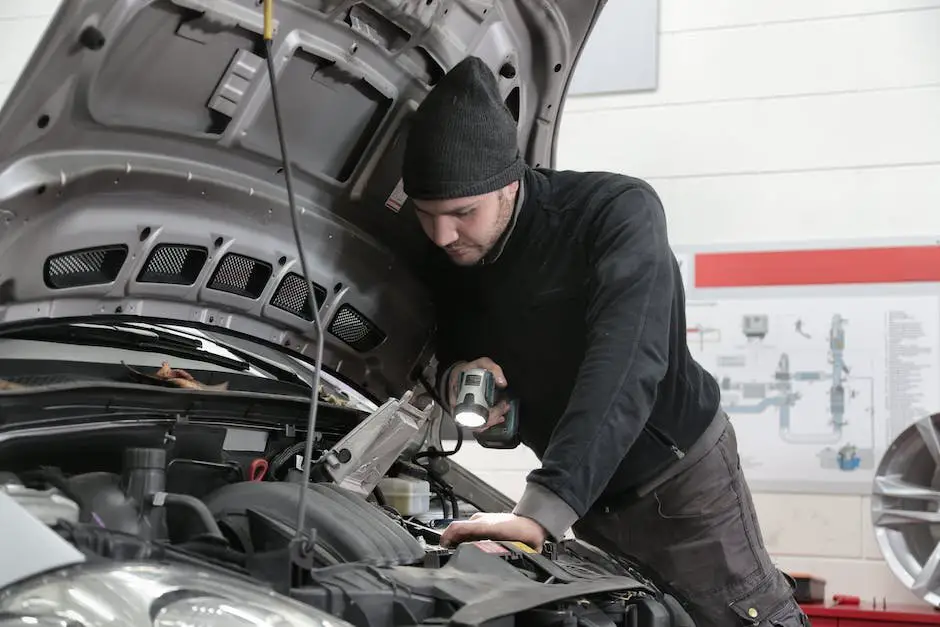
Preventive Measures to Avoid Future Clicking Noises
Clicking Noises in Your Car: Staying Vigilant and Proactive
Have you ever been cruising down the road when a mysterious clicking noise starts to play an unwanted tune in your vehicle? By now, you’re likely well-versed in some of the usual suspects that contribute to these unsettling symphonies, but there are a few more covert causes that could be suspect.
Let's dive into additional steps and measures to track down and prevent those clicks from becoming a recurring, hair-raising soundtrack of your daily commute.
Electrical Components and Relays – It's Electric!
Electrical faults can sometimes manifest as clicking sounds. These can originate from relays turning on and off rapidly because of a failing component or a loose connection. Check under the hood and, with the engine off, listen carefully as you operate various switches inside the car. If the clicks align with your actions, you may have found an electrical gremlin worth addressing.
Tightness in Accessories – A Close Examination
Accessories driven by the engine's serpentine belt, like the alternator or air conditioning compressor, can produce a clicking noise if their bearings are failing or if there's insufficient belt tension. Inspect belt tension, and listen for clicking that changes with engine RPMs to pinpoint an issue. A mechanic's stethoscope can prove invaluable for this task.
Regular Fluid Checks – Prevention Is Key
Regularly checking fluid levels and conditions, beyond just your power steering fluid, can head off issues. Low engine oil, for instance, can contribute to valvetrain noise, which can include a clicking or ticking sound, especially on startup. Make this part of your routine maintenance to mitigate noises before they become chronic.
Fender Liner Check – The Hidden Culprits
It’s worth a peek at the inner fender liners and other underbody panels. They can sometimes come loose and click against the wheels or tires as they rotate, especially if a plastic clip or fastener has gone missing. A thorough inspection can save you from chasing apparitions of the mechanical nature.
Undercarriage Review – A Bottom-Up Approach
Don't forget a comprehensive undercarriage inspection. Objects like stones can get lodged between brake disc shields and rotors or other components, leading to a persistent click with each wheel revolution. Sometimes, solving a clicking mystery is a simple matter of removing these unwelcome stowaways.
In Conclusion
The reality is, cars are complex creatures filled with numerous moving parts, all of which can begin to sound off when they're unhappy. By keeping a keen ear and a patient, methodical approach to troubleshooting, the source of clicking noise can often be silenced by the dutiful car enthusiast. Regular inspections, a hands-on approach, and the occasional professional viewpoint blend together to create a harmonious, click-free driving experience.

Steering your way through the unfamiliar territories of car noises and potential mechanical issues can be quite the challenge. Yet, by arming yourself with the knowledge of common causes, mastering the art of diagnosis, and effectively applying practical solutions, you are more prepared than ever to tackle the puzzling click that disrupts the serenity of your turn. Remember, your car is a loyal companion on the road, and with attentive care and proactive maintenance, you can ensure that it stays in peak condition, ready to take on every curve and corner without a whisper of protest.
Image Source: https://writio.com/

